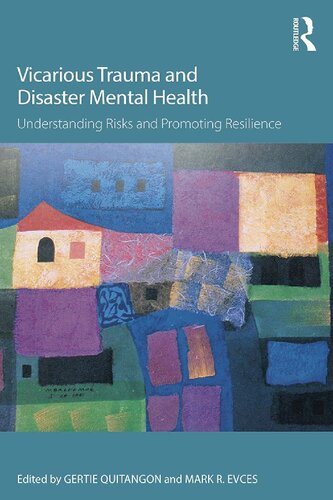

Most ebook files are in PDF format, so you can easily read them using various software such as Foxit Reader or directly on the Google Chrome browser.
Some ebook files are released by publishers in other formats such as .awz, .mobi, .epub, .fb2, etc. You may need to install specific software to read these formats on mobile/PC, such as Calibre.
Please read the tutorial at this link. https://ebooknice.com/page/post?id=faq
We offer FREE conversion to the popular formats you request; however, this may take some time. Therefore, right after payment, please email us, and we will try to provide the service as quickly as possible.
For some exceptional file formats or broken links (if any), please refrain from opening any disputes. Instead, email us first, and we will try to assist within a maximum of 6 hours.
EbookNice Team

Status:
Available4.8
35 reviewsVicarious Trauma and Disaster Mental Health focuses on the clinician and the impact of working with disaster survivors. Floods, hurricanes, tornadoes, mass shootings, terrorism and other large-scale catastrophic events have increased in the last decade and disaster resilience has become a national imperative. This book explores vicarious traumatization in mental health providers who respond to massive disasters by choice or by circumstance. What happens when clinicians share the trauma and vulnerability from the toll taken by a disaster with the victims they care for? How can clinicians increase resilience from disaster exposure and provide mental health services effectively? Vicarious Trauma and Disaster Mental Health offers insight and analysis of the research and theory behind vicarious trauma and compares and contrasts with other work-impact concepts such as burnout, compassion fatigue and secondary traumatic stress. It proposes practical evidence-informed personal strategies and organizational approaches that address five cognitive schemas (safety, esteem, trust, control and intimacy) disrupted in vicarious trauma. With an emphasis on the psychological health and safety of mental health providers in the post-disaster workplace, this book represents a shift in perspective and provides a framework for the promotion of worker resilience in the standard of practice in disaster management.